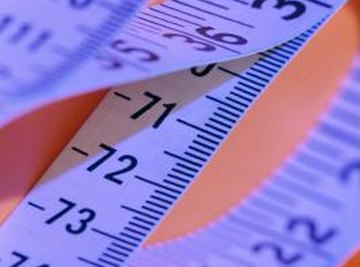
The units of metric measurements were standardized in 1799. Created in France, the metric system is now an international measurement system. The system is based on the meter (a unit of length) and the kilogram (a unit of mass). The system has changed over time, but it is still the most popular measurement system used in the world.
Various Metric Units
The gram was the first unit defined as a unit of mass. The metric system adopted the kilogram as the standard unit of mass (a gram measures 1/1,000 of a kilogram). The standard unit of volume is the liter. One liter is equal to 1,000 cubic centimeters in volume measurements. The unit of area is the acre.
Powers of 10
The metric system is based on a measure of 10. This allows conversions from different units more easy--simply moving a decimal point either to the left or to the right. For example, 1 millimeter is equal to 0.001 meter; a centimeter, which is a unit 0.1 larger than a millimeter, is 0.01 meter.
History & Evolution
After its adoption in 1799, the metric system began enduring some changes. Many countries initially were resistant to the system; it was Belgium, Luxembourg and the Netherlands that mandated its use in 1820. In 1850, scientists worldwide began revolutionizing the metric system. From that time until 1900, the adoption of the metric system grew exponentially, including most of Europe and Latin America.
In 1875, most industrialized countries--including the United States, but not Great Britain--signed the Treaty of the Meter. This treaty created the International Bureau of Weights and Measures, now called the International System of Units. This bureau changed customary units and tweaked the system.
Modern System
The modern metric system is called the International System of Units, or SI, and it was developed by scientists worldwide. This new adoption has more precise definitions of each of the units.
Other Measuring Systems
Additional measuring systems have been developed as a result of the creation of the metric system. These include the CGS system is based on the centimeter of length, the gram of mass and the second of time. It uses smaller units of measure than the MKS system, which is based on the meter of length, the kilogram of mass and the second of time.
References
About the Author
Jessica Anne Elizabeth, co-founder of thinkgirl.net, is an established freelance writer and editor with a expertise in the beauty industry. Her areas of interest include hair, make-up and skincare, as well as reproductive health and pregnancy. She holds a bachelor's degree in journalism from Rutgers University.
Photo Credits
Jupiterimages/liquidlibrary/Getty Images
